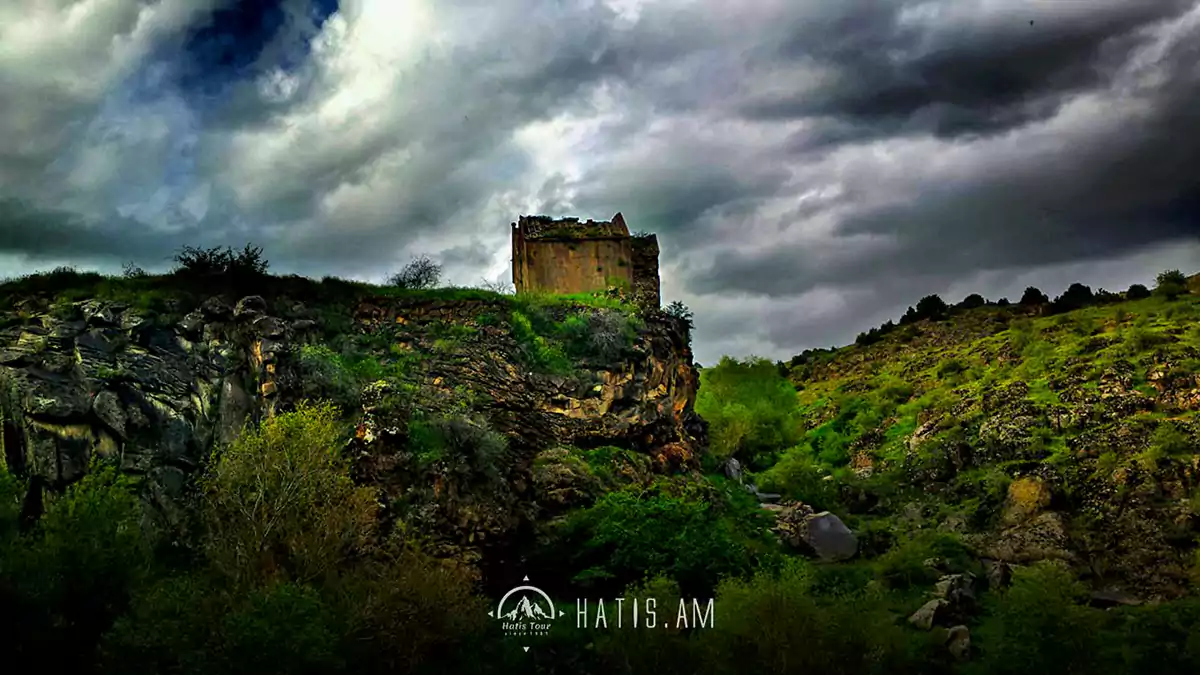.webp)
Kayan Fortress is located in the Lori Region of Armenia, between the villages of Hagpat and Sanahin, about 2 km west of Hagpat, on a high promontory bordered by gorges, at the confluence of the Hagpat River and the Zhivank River. Halghpati S. The sign is the fortress of the monastery. It was built by S. Haghpati. Bishop Hovhannes, the leader of Nshan Monastery (the son of the sister of princes Ivan and Zakare Zakaryan) in 1233, for the reasons of protecting the wealth of the monastery and the congregation from external threats. The construction protocol has been preserved in S. inside the castle. On the western front of the Astvatsatsin (Dsevank) church, according to which bishop Hovhannes built the church at the same time as the castle. XIII century historian Kirakos Gandzaketsi also mentions the construction of the fort between Haghpat and Sanahin by Bishop Hovhannes. Some researchers are of the opinion that Bishop John did not build a fortress, but rebuilt an earlier fortress. Kayan Fortress (Kayan) was named in the late period and is known by that name. Sometimes they have identified the middle stream of the Aghstev river, 10th-11th centuries. The Kayan fortress, founded during the Kyurikians' reign, and the written information about it were mistakenly attributed to the Haghpatamerz fortress. It is one of the remarkable structures of medieval Armenian fortress construction. It is surrounded by strong walls consisting of more than one and a half dozen pyramid-towers with a 120 m south-north extension. It consists of two parts: southern and northern. The south is separated from the north by a wall. They communicate with each other through an arched gate left in the wall (ruined). There are two entrances: south and west. The main entrance is on the southern side, which connects the cape to Haghpat village. The road passes through Sherek valley, on Zhivank river, XIII century. built over a stone bridge. Remains of a large number of buildings, water basins, and water supply lines have been preserved inside the castle. Water was brought to the castle from the mountains south of Akner (formerly Ornak) village through fired clay pipes. The castle was destroyed in 1241. during the Mongol-Tatar invasions. Now half-destroyed. Some of the all-shaped towers, half-ruined ramparts remain.


.webp)
.webp)
.webp)
.webp)
.webp)
.webp)
.webp)
.webp)
.webp)
.webp)
.webp)
.webp)
.webp)
.webp)
.webp)






.webp)
.webp)
.webp)
.webp)
.webp)
.webp)

.webp)
Leave a comment